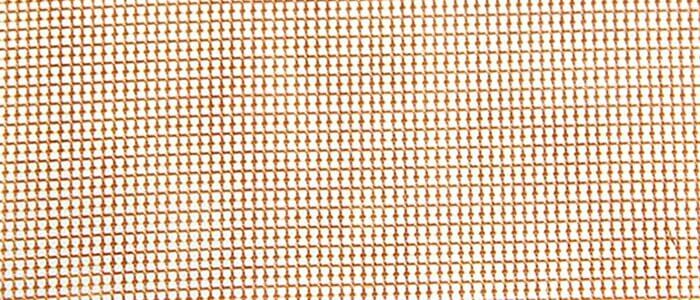Introduction:
Grey iron casting, also known as gray iron casting, is a widely used process in the United States for manufacturing various industrial components. It plays a crucial role in producing items like engine blocks, pipe fittings, and machine tool structures. To ensure the quality and integrity of these castings, foundries employ various techniques, and in recent years, ceramic foam filters and fiberglass mesh filters have gained prominence.
The Significance of Grey Iron Casting
Grey iron casting is the process of melting iron and pouring it into molds to create parts with excellent castability, thermal conductivity, and wear resistance. It has been a cornerstone of the American manufacturing industry for decades, contributing to numerous sectors, including automotive, construction, and agriculture.
Ceramic Foam Filters: Improving Quality
Ceramic foam filters are an integral part of the grey iron casting process. These filters are made from high-temperature-resistant ceramic materials, typically alumina or silicon carbide. They serve as a critical tool for removing impurities and contaminants from molten metal before it enters the mold.

The advantages of ceramic foam filters include:
1. Improved Metal Cleanliness: Ceramic foam filters effectively trap and remove inclusions, slag, and other contaminants, leading to cleaner molten metal.
2. Enhanced Mechanical Properties: The use of ceramic foam filters can result in castings with improved mechanical properties, including tensile strength and elongation.
3. Reduced Defects: Filtering molten metal helps reduce common casting defects like porosity, shrinkage, and non-metallic inclusions.
4. Better Surface Finish: Castings produced with ceramic foam filters often exhibit a smoother surface finish, reducing the need for post-casting machining.
Fiberglass Mesh Filters: An Alternative Approach
In addition to ceramic foam filters, some foundries in the United States also utilize fiberglass mesh filters. These filters are made from woven fiberglass strands and are designed to remove larger impurities and contaminants from the molten metal.

Key benefits of fiberglass mesh filters include:
1. Cost-Effectiveness: Fiberglass mesh filters are generally more cost-effective than ceramic foam filters, making them a viable option for some foundries.
2. Effective for Larger Contaminants: They are highly effective at capturing larger particles and contaminants, preventing them from entering the mold.
3. Consistent Flow: Fiberglass mesh filters maintain a consistent flow of molten metal, ensuring a stable casting process.
4. Ease of Handling: They are easy to handle and install, contributing to the overall efficiency of the casting process.
The Casting Process
Before we dive deeper into the filtration methods, let’s briefly outline the grey iron casting process. It involves several key steps:
1. Melting: Iron is melted in a furnace at extremely high temperatures, typically between 2,600 and 2,800 degrees Fahrenheit (1,430 to 1,540 degrees Celsius).
2. Pouring: Once the iron reaches the desired molten state, it is poured into molds made of sand or other materials. These molds are shaped to match the final product.
3. Solidification: As the molten metal cools and solidifies, it takes the shape of the mold, creating the desired casting.
4. Cooling and Removal: After solidification, the casting is allowed to cool before it is removed from the mold. This process is critical to prevent defects and ensure the casting maintains its structural integrity.
5. Cleaning and Finishing: The casting is cleaned of any residual mold material and may undergo finishing processes, such as machining or surface treatments, to meet specifications.
Ceramic Foam Filters: A Closer Look
Ceramic foam filters are an innovation that has revolutionized the grey iron casting process. They are inserted into the gating system of the mold, right before the molten metal is poured. Here’s how they work in detail:
– Filtration Mechanism: As the molten metal flows through the ceramic foam filter, the intricate network of ceramic pores acts as a sieve, trapping and retaining impurities and contaminants. This prevents these unwanted elements from entering the mold cavity.
– Improved Metallurgical Properties: By removing impurities like oxides, slag, and non-metallic inclusions, ceramic foam filters contribute to the creation of castings with enhanced metallurgical properties. This includes increased tensile strength, better ductility, and improved overall quality.
– Reducing Defects: One of the primary benefits of ceramic foam filters is their ability to reduce common casting defects. This includes minimizing porosity, which can weaken castings, and reducing the risk of shrinkage defects, which can result in dimensional inaccuracies.
– Enhancing Surface Finish: Castings produced with ceramic foam filters often exhibit a smoother surface finish, reducing the need for extensive post-casting machining. This not only saves time but also improves the final product’s aesthetics.
Fiberglass Mesh Filters: An Economical Choice
While ceramic foam filters excel in many applications, some foundries in the United States opt for fiberglass mesh filters due to specific requirements or cost considerations:
– Particle Removal: Fiberglass mesh filters are particularly effective at capturing larger particles and contaminants, making them suitable for applications where such impurities are prevalent.
– Cost-Effective: Fiberglass mesh filters are generally more budget-friendly than their ceramic counterparts. This cost advantage can be a significant factor for foundries looking to optimize their expenses.
– Consistent Flow: These filters maintain a consistent flow of molten metal, which is crucial for maintaining the integrity of the casting process and ensuring uniform quality.
– Ease of Handling: Fiberglass mesh filters are lightweight and easy to handle and install, contributing to the overall efficiency of the casting process.
Future Trends in Grey Iron Casting
As the manufacturing industry in the United States continues to evolve, so does grey iron casting. Several trends and advancements are shaping the future of this industry:
– Digital Simulation: Foundries are increasingly using digital simulation tools to optimize the casting process. This allows for better control over variables and helps reduce defects.
– Sustainability: Environmental concerns are driving the adoption of more sustainable practices in casting, including recycling and reducing energy consumption.
– Material Innovation: Advances in materials science are leading to the development of high-performance alloys that further enhance the capabilities of grey iron casting.
Conclusion:
In conclusion, grey iron casting remains a vital component of American manufacturing, supporting diverse industries with a wide range of products. Ceramic foam filters and fiberglass mesh filters play crucial roles in ensuring the quality and integrity of castings. The choice between these filtration methods depends on the specific needs of the foundry, with ceramic foam filters excelling in finer filtration and fiberglass mesh filters offering cost-effective solutions for specific applications. As technology and sustainability concerns continue to shape the industry, the future of grey iron casting in the United States holds promise for even greater advancements and quality improvements.


